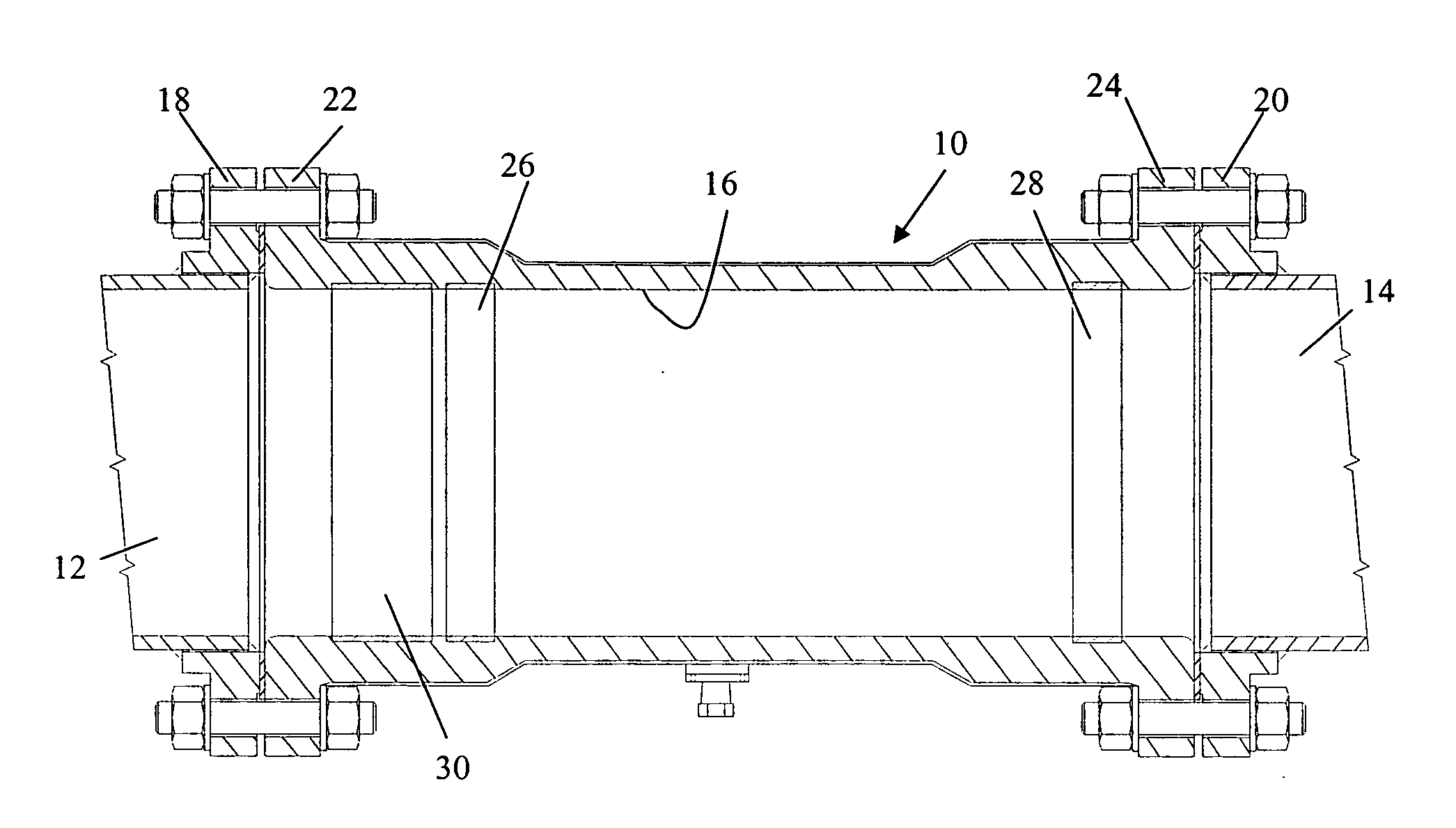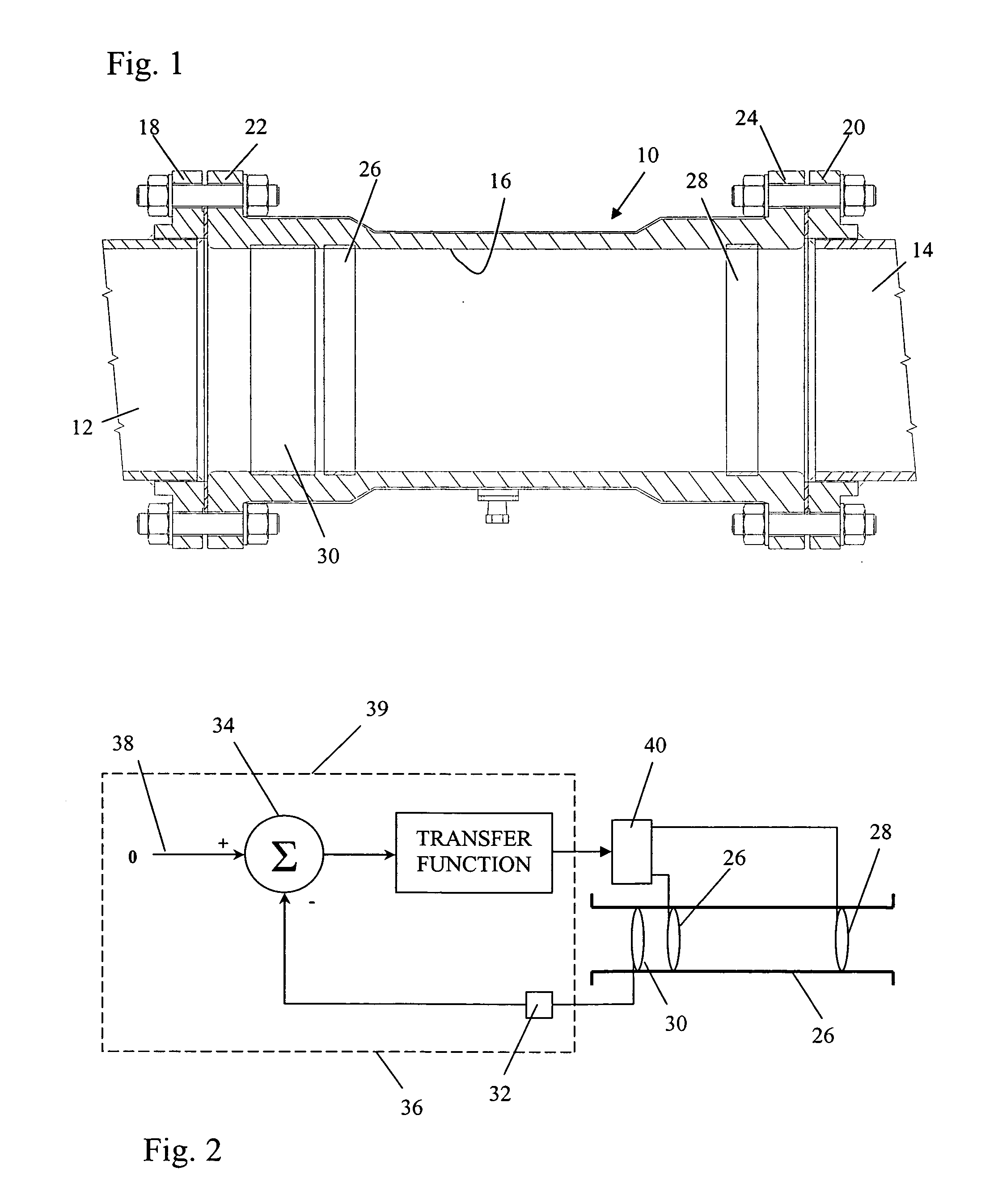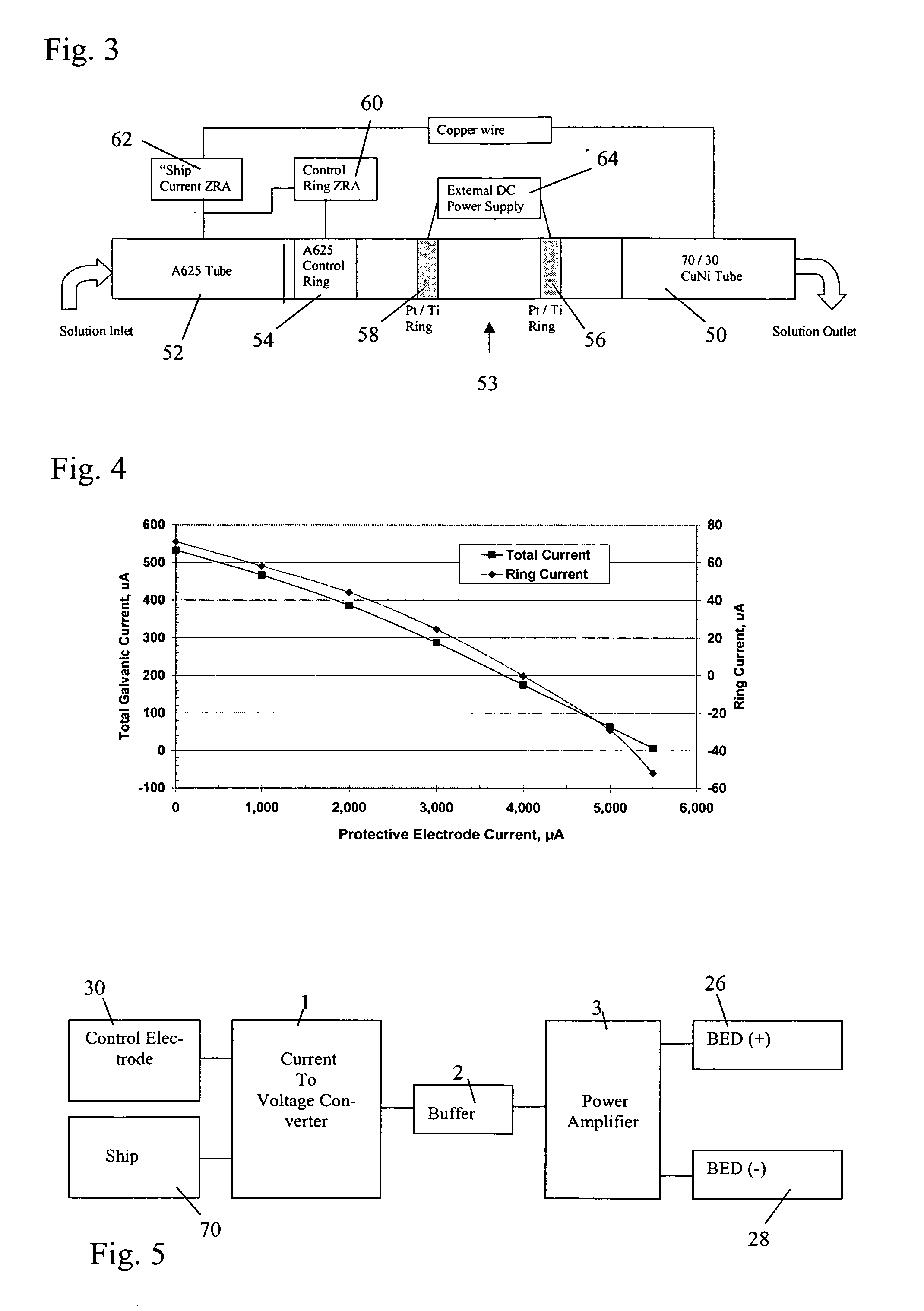Control for galvanic corrosion inhibiting coupling
a control system and galvanic corrosion technology, applied in the field of electrochemistry, can solve the problems of inability to monitor the external circuit current in a practical manner, insufficient system of sensing the potential difference between two sensor electrodes as an approximation of the pipe potential difference, and inability to reduce the magnitude of the sensed current, reduce the effect of corrosion
- Summary
- Abstract
- Description
- Claims
- Application Information
AI Technical Summary
Benefits of technology
Problems solved by technology
Method used
Image
Examples
Embodiment Construction
[0024]FIG. 1 illustrates a galvanic corrosion inhibiting coupling 10 joining two electrolyte-conveying pipes 12 and 14. The pipes are constructed of electrochemically dissimilar metals. For example, the pipe 12 may be a nickel based alloy, Inconel 625, and the pipe 14 a Cu-30 Ni alloy. Consequently, the pipe 12 is the relatively more noble metal and the pipe 14 is the relatively more active metal. The coupling 10 is tubular and has an interior wall 16 defining an interior, fluid conveying chamber. The opposite ends of the coupling 10 are adapted for connection to the pipes 12 and 14 so the coupling 10 axially conveys an electrolyte between the pipes. These ends may be conventional in nature such as flanges 18 and 20 that are welded to the pipes 12 and 14 and flanges 22 and 24 formed integrally on the coupling 10 so the respective flanges abut and are bolted together.
[0025]The tubular coupling 10 is preferably constructed of an electrically insulating material, such as a plastic or s...
PUM
| Property | Measurement | Unit |
|---|---|---|
| axial length | aaaaa | aaaaa |
| diameter | aaaaa | aaaaa |
| diameter | aaaaa | aaaaa |
Abstract
Description
Claims
Application Information
 Login to View More
Login to View More - R&D
- Intellectual Property
- Life Sciences
- Materials
- Tech Scout
- Unparalleled Data Quality
- Higher Quality Content
- 60% Fewer Hallucinations
Browse by: Latest US Patents, China's latest patents, Technical Efficacy Thesaurus, Application Domain, Technology Topic, Popular Technical Reports.
© 2025 PatSnap. All rights reserved.Legal|Privacy policy|Modern Slavery Act Transparency Statement|Sitemap|About US| Contact US: help@patsnap.com



